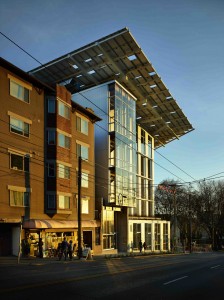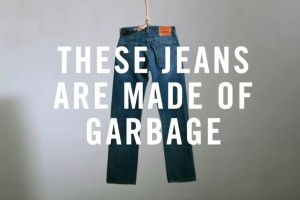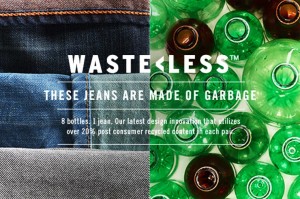![]() I should start by saying that architecture and design is what first got me “into” sustainability. As a result, for me personally, the word sustainability will forever be tied to the physical environments we inhabit. Fortunately, over time I’ve found that when architecture and sustainability intercept, some really amazing things can happen.
I should start by saying that architecture and design is what first got me “into” sustainability. As a result, for me personally, the word sustainability will forever be tied to the physical environments we inhabit. Fortunately, over time I’ve found that when architecture and sustainability intercept, some really amazing things can happen.
One of these amazing creations is the Bullitt Center in Seattle. This April 2013 article discusses the many ways that the building is pushing the boundaries of sustainable design. One notable goal is the achievement of the Living Building Challenge, the “the built environment’s most rigorous performance standard.” A few of the ways Bullitt Center will achieve this: 100% on-site renewable energy generation; 100% of water needs provided by harvested rainwater; and, a water-less toilet system that composts human waste and turns it into fertilizer.
The interesting thing about this article is that despite being written a year ago, it is still very relevant. Why? Well, in order to become a designated Living Building (in the entire world, there are only 5 so far) Bullitt Centre needs to be fully self-sufficient for 12 continuous months (after it is fully occupied), and it hasn’t hit the 12 month mark yet. Even so, there seems to be no doubt that it will achieve its goal.

Another aspect of this article resonates with me, in large part due to our in-class discussion about how maybe it isn’t enough for a company to create a green solution to a problem; the problem might be a consumer behaviour issue that needs to be addressed. (Remember: FreshPaper, which lowers food waste by extending the life of produce) This discussion came to mind when I read about Bullitt Center, because the tenants are forced to change their behaviour to adapt to the building. One example, there is no parking, only bike storage. Another example: a staircase is the only way to get from floor to floor (there is one slow elevator if needed, accessible by key-card only). While these are small sacrifices (it’s only a six-storey building), they are not ones that you often see in commercial architecture.
In my opinion, I think the Bullitt Center has truly pushed the envelope. (Talk about giving the Architect path to green growth some literal meaning!) And the best part is, Bullitt Center is committed to showing others how to do what they’ve done. According to the president and CEO of Bullitt Foundation, “If the building is still the highest-performing one of its kind 10 years from now, the experiment will have failed.” To me, this sounds like a challenge, and I’m excited to see who takes it on, and how.



